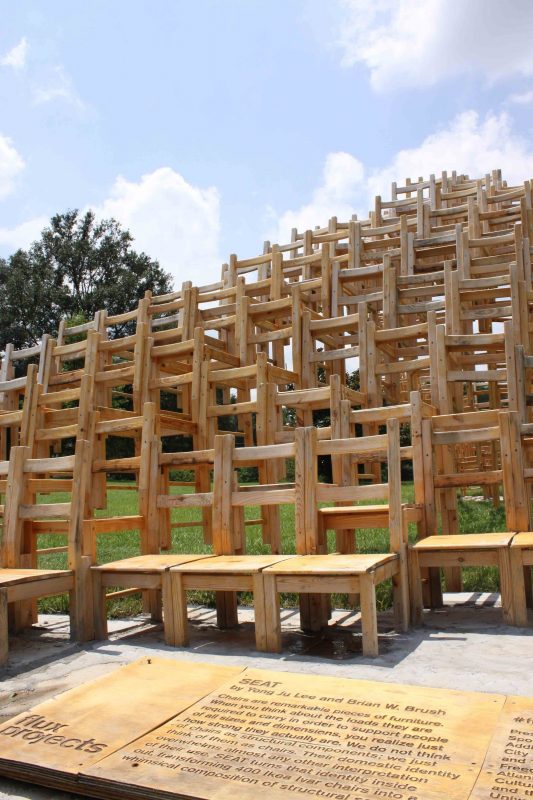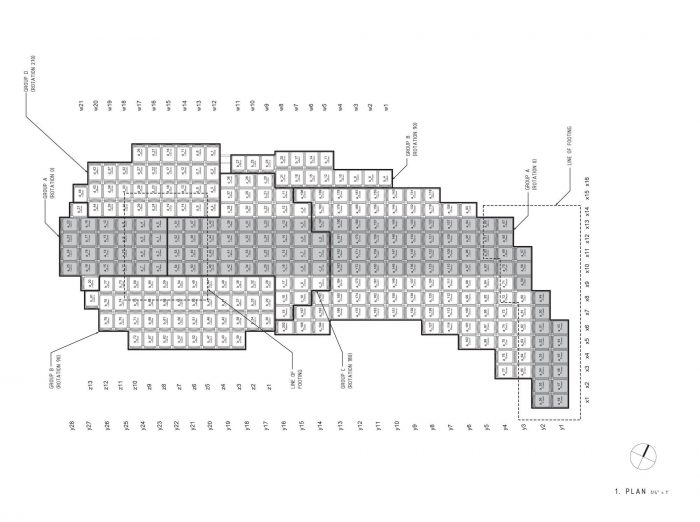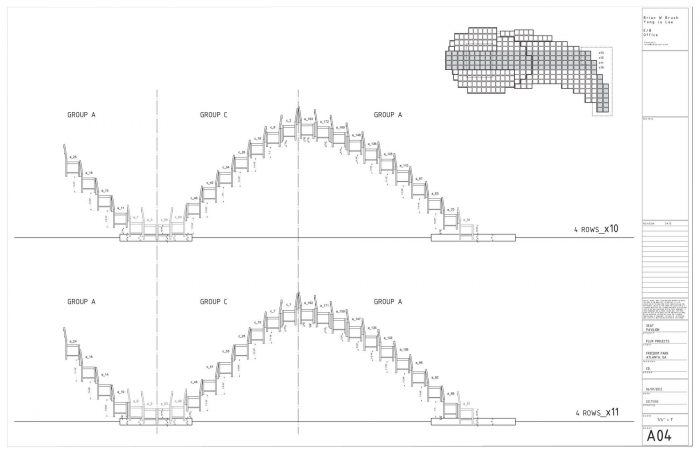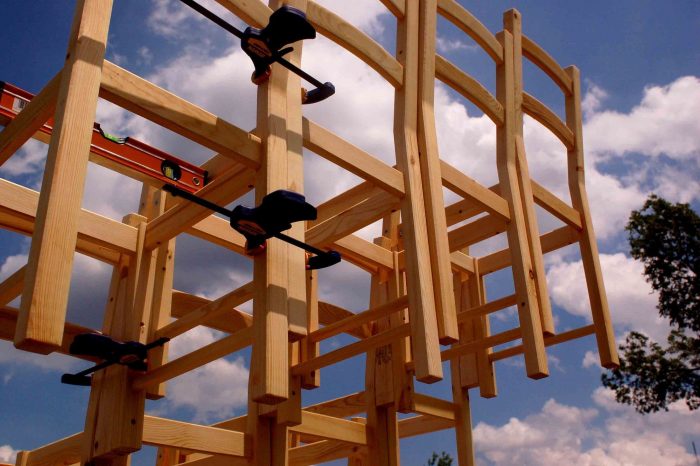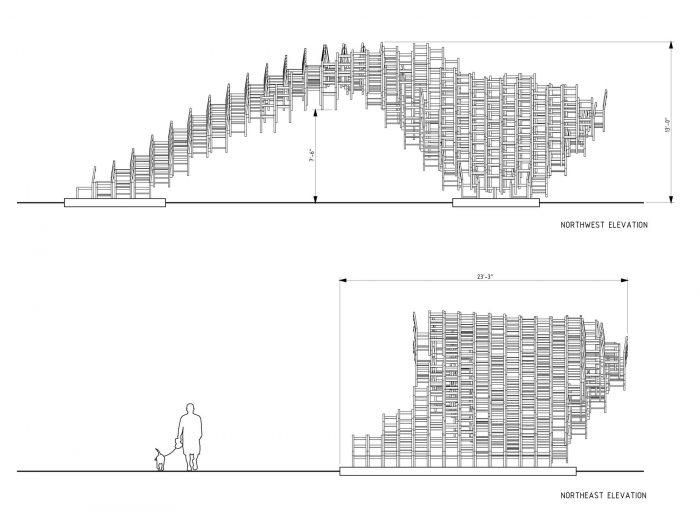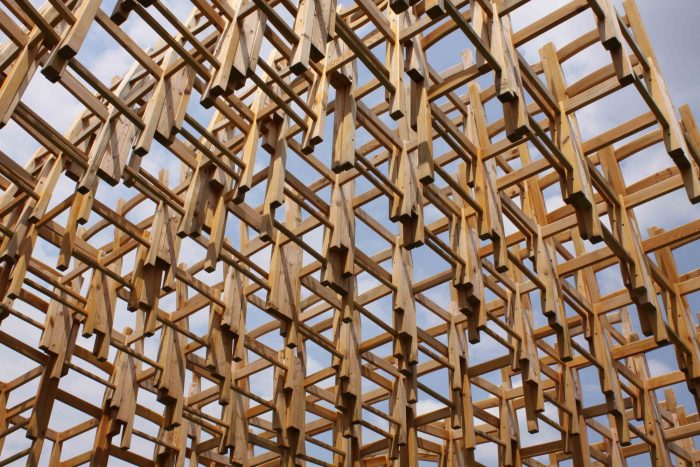A very interesting created by New York design collaboration E/B Office, the installation located in Freedom Park in Atlanta, Georgia and utilizes 400 simple wooden chairs arrayed and stacked in a sine wave surface, the structure was built by starting from the edges and corners and working in towards the middle, connecting the chairs together with bolts, clamps, and hidden screws. The project formalizes the transformation of chairs from detached useable objects into structural and spatial components of an ambiguously occupiable edifice. E/B Office, is a recently completed winning entry for this year’s Flux Project in Freedom Park. More images and architects’ description after the break.
Project Description from the Architects:
Sitting is perhaps the most common condition from which we experience architecture. Whether we work, relax, watch, eat, sleep, or talk to each other, sitting is at the core of our relationship to buildings. Sitting enables the detached observation of our lives in space and time, whether it’s to look upon the buildings we inhabit, or look out from them, towards the cultural milieu that surrounds. Sitting enables a perception of the other and beyond opposite the inclusivity and interiority of our personal spaces that we carry with us. It conditions a cosmological covenant between one’s body and one’s place in architecture. It produces a body space continuum. Sitting structures our habitable spaces from within to without, determining the proportions of useable objects, forms, spaces, dimensions, and relationships in an unfolding sequence of architectonic layers.
Despite the importance of sitting in the use and experience of architecture, the objects we use to sit aren’t considered architecture at all. They are relegated to the domains of industrial design or furniture as mere players in a larger architectural scene. Why the disconnect? Why the disassociation of sitting in a designed object with architecture itself? Our proposal attempts to address this question through the exploration of the architectural Folly not in terms of a mused edifice of boundaries, i.e. walls, floors, and roofs rendered picturesque; but rather that which gives rise to architecture as observed and contemplative: the chair. We’ve turned the Folly inside out, creating a playful object of ornamental repose celebrating the act of repose itself as a fundamental architectural event.
SEAT is composed of approximately 400 simple wooden chairs arrayed and stacked in a sine wave surface drawn into an agitated vortex rising from the ground. It formalizes the transformation of chairs from detached useable objects into structural and spatial components of an ambiguously occupiable edifice. It’s intended to be legible and readable as a collection of individual seats, but when approached, visitors realize that sitting down in any one of them amounts to a deliberate act of occupation one can’t take for granted as usual; a temporary social contract to redefine their perception of sitting embodied as architecture. The structure is zoned by rotational differentiation in groups. Chairs around the immediate periphery are rotated for outward observation of the city and the surrounding neighborhood. At the base of the vortex, chairs turn inward to create an intimate, compressive space for visitors to converse and regard the upward flow of chairs transcending their function. Chairs suspended above ground between these zones re-constitute the role of the seated object as one that can also play as structure, decoration, and enclosure.
The chairs are additively assembled through a modified “corbelling” process achieved by sequentially attaching chairs beginning at the edges and corners working towards the center. At times, the result playfully resembles Persian Muqarnas. The chairs are esiliently connected to each other via simple lag bolts, clamps, and screws that are hidden from view. Parametric detailing manages tolerances and connection pecifics of this hardware. Moment and shear forces are transferred through the entire structure as a continuous diaphragm ultimately loading at the vortex center and the seated periphery on the ground. A number of base connections, platforms, or struts may also augment structural stability and anchorage. Some cantilevered extensions exist to create overhanging enclosure, but are minor in actual weight aloft. Redundancy in aterial and connection will allow for stability, flexibility, and safety overall.
Credits:
Assembly team: Rudi Matheis-Brown, Tom Roncco, Kyle Holland, Larissa Hand, David Williams, Britni Jeziorski, Megan Mallery, Katie Seifert, Wendy Chou, Kayla Kirchberg, Sarah Turner, Emily Gilbert, Colleen Devoe, Casey Butler, Cydne Mayberry, Maria Lioy, Sydney Styles
Photography courtesy of E/B Office and Eve Styles.
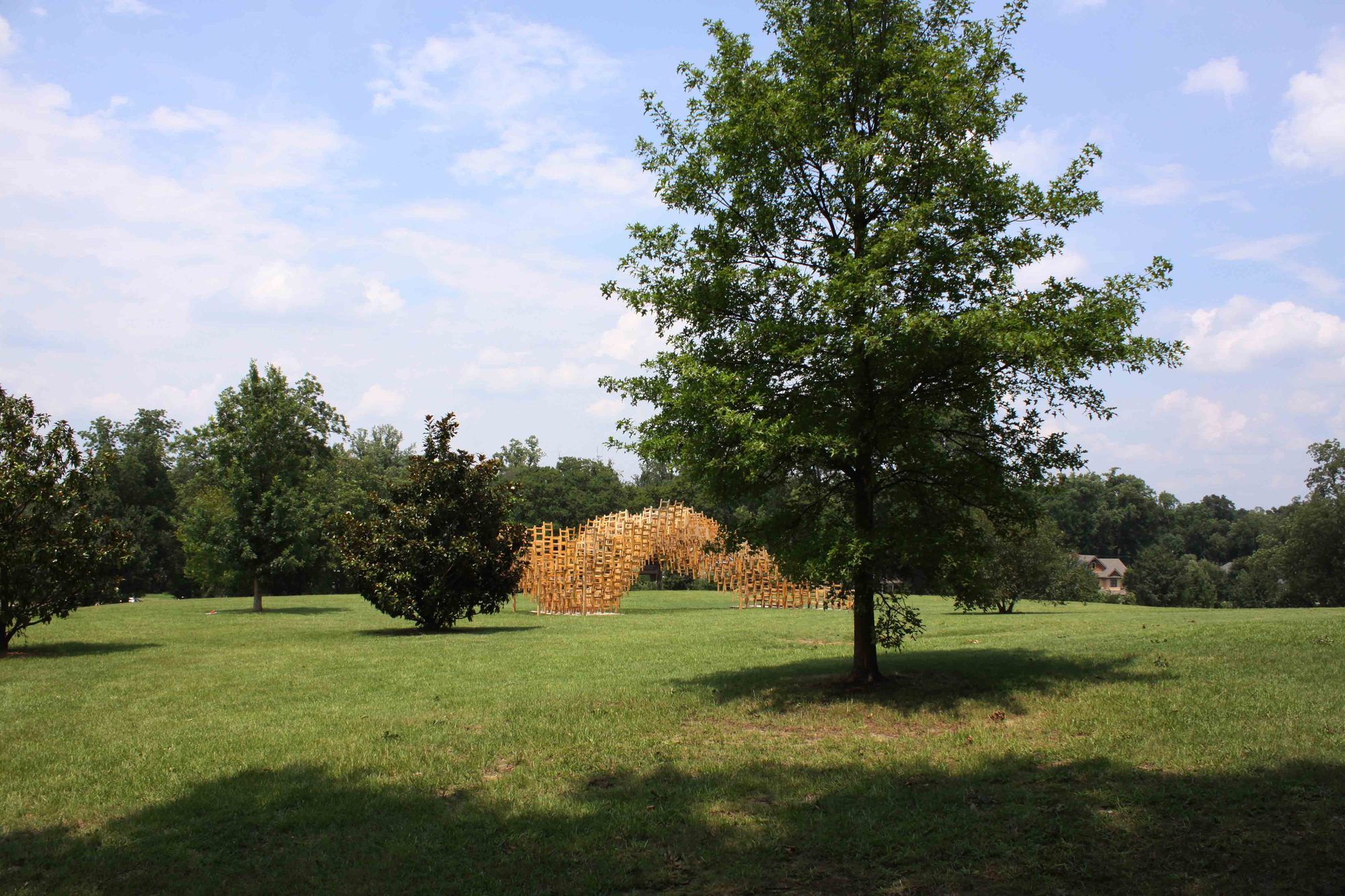
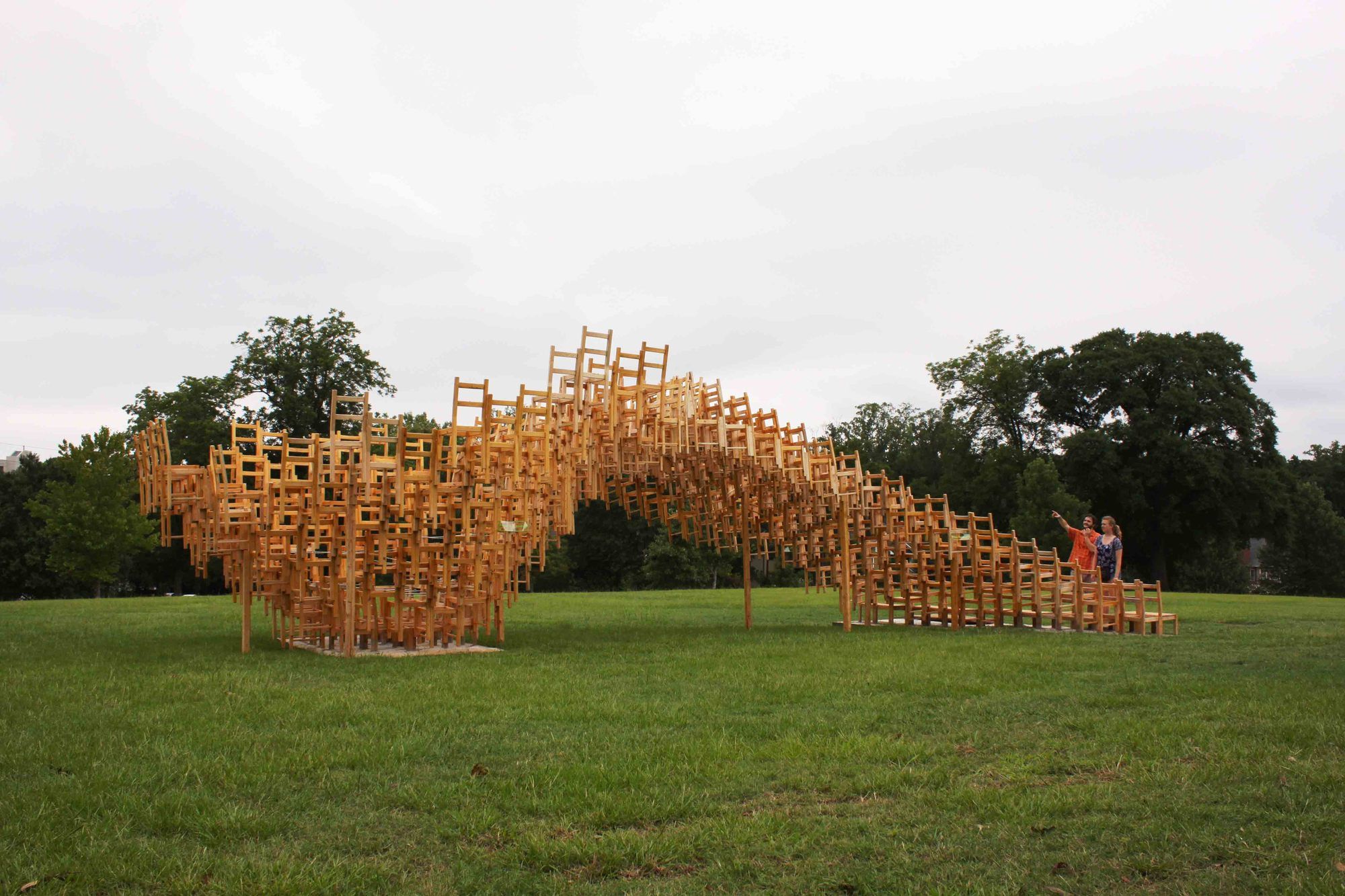
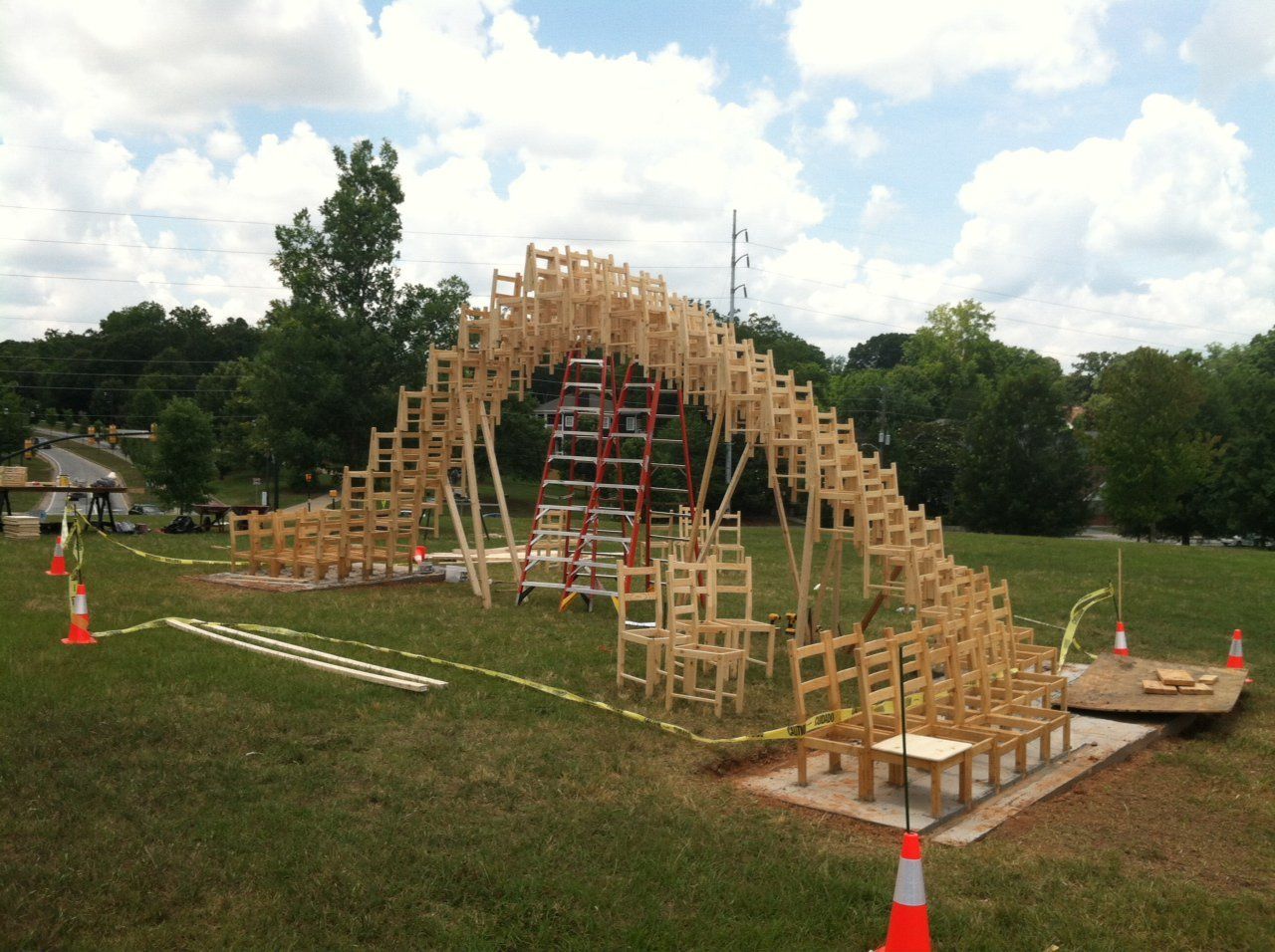

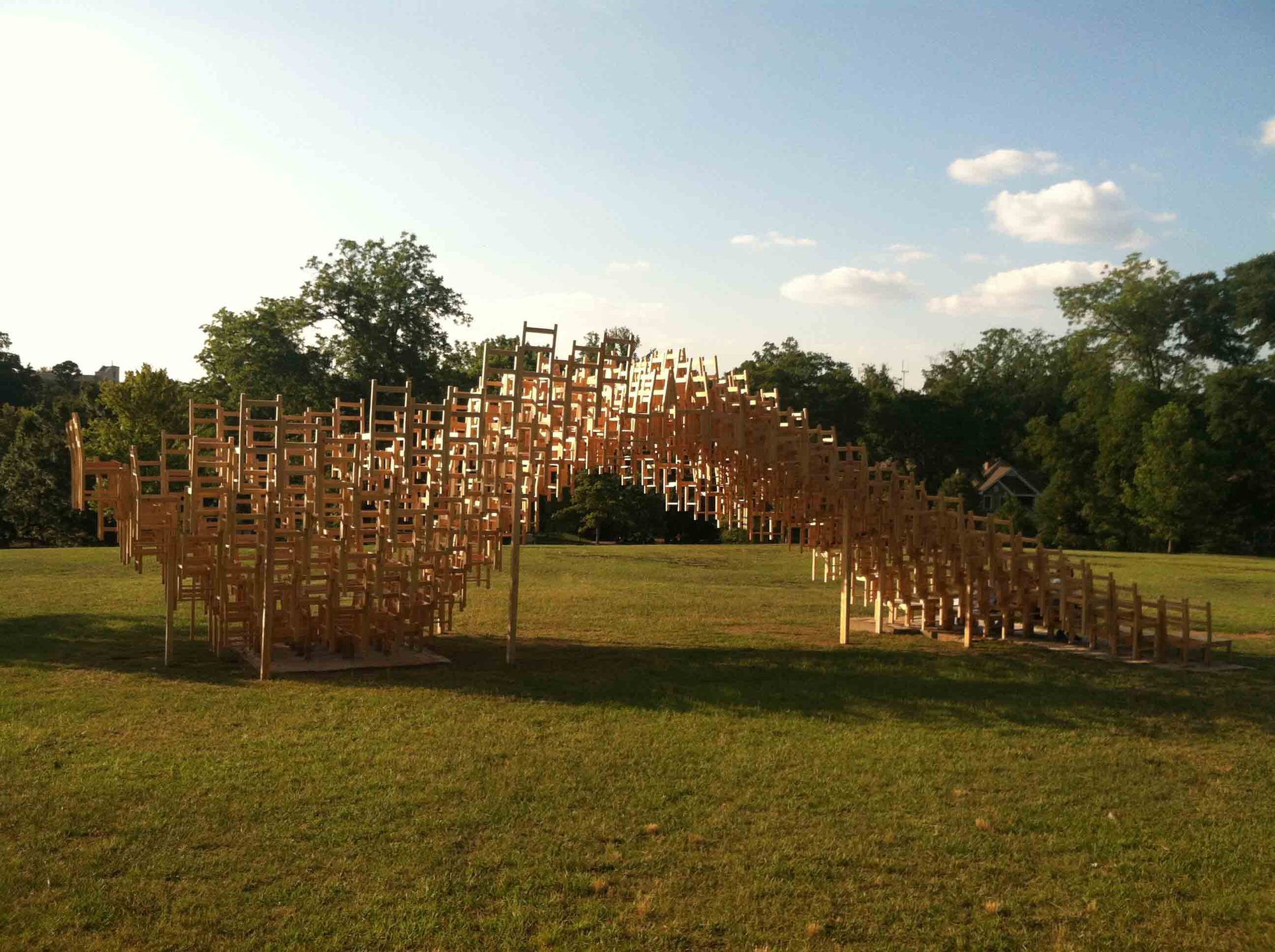




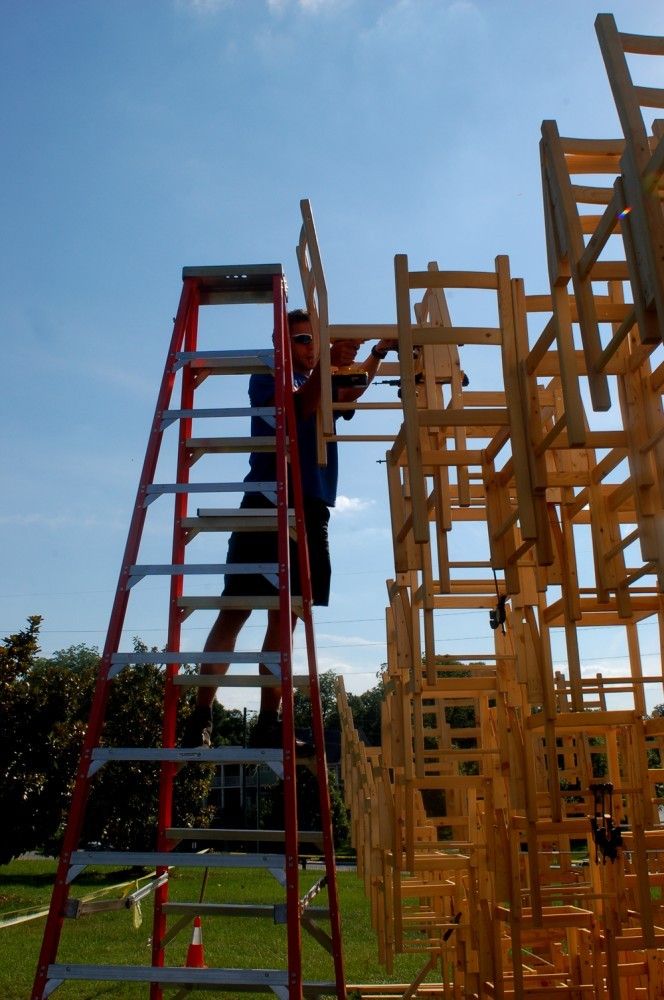
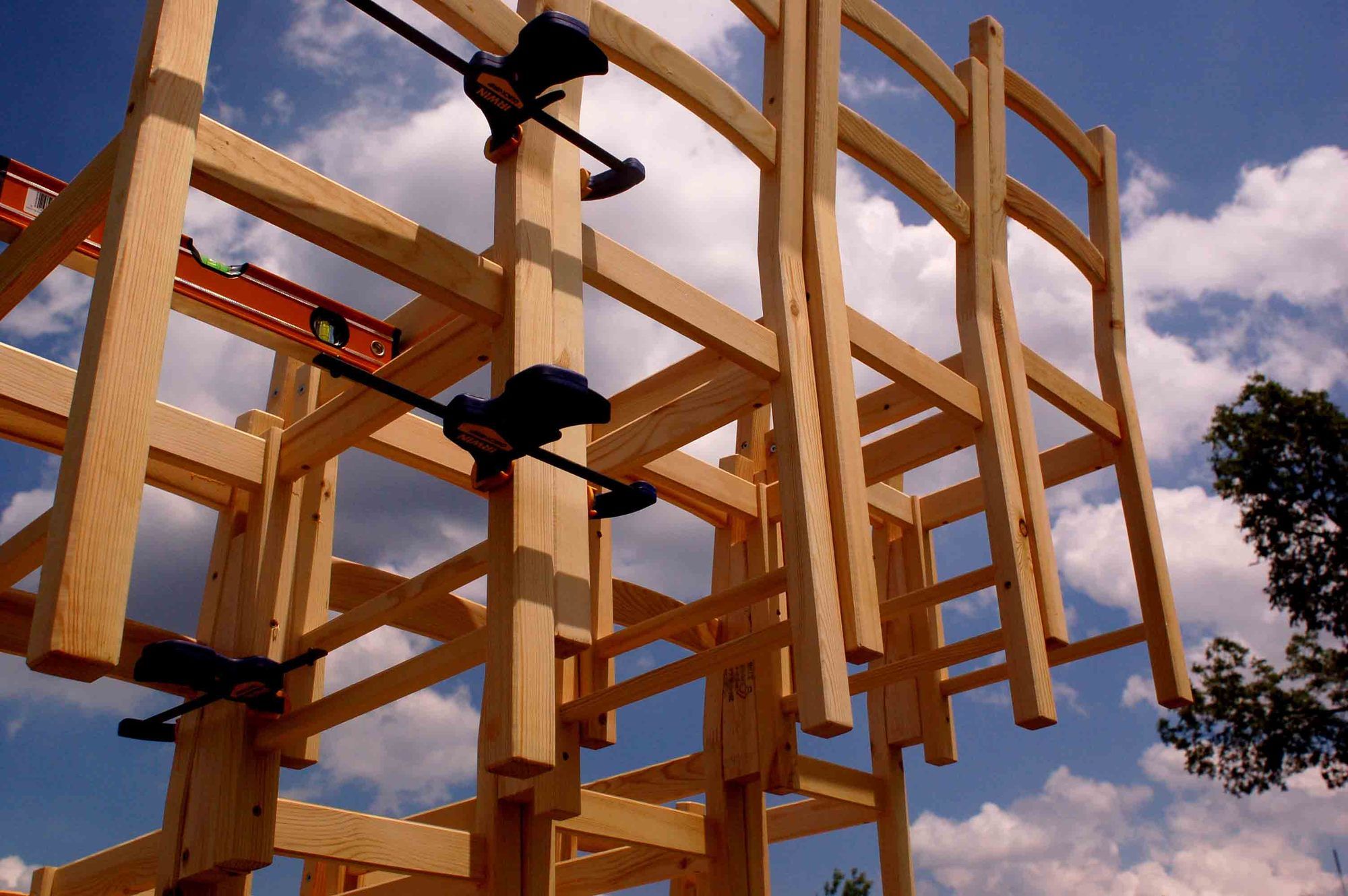
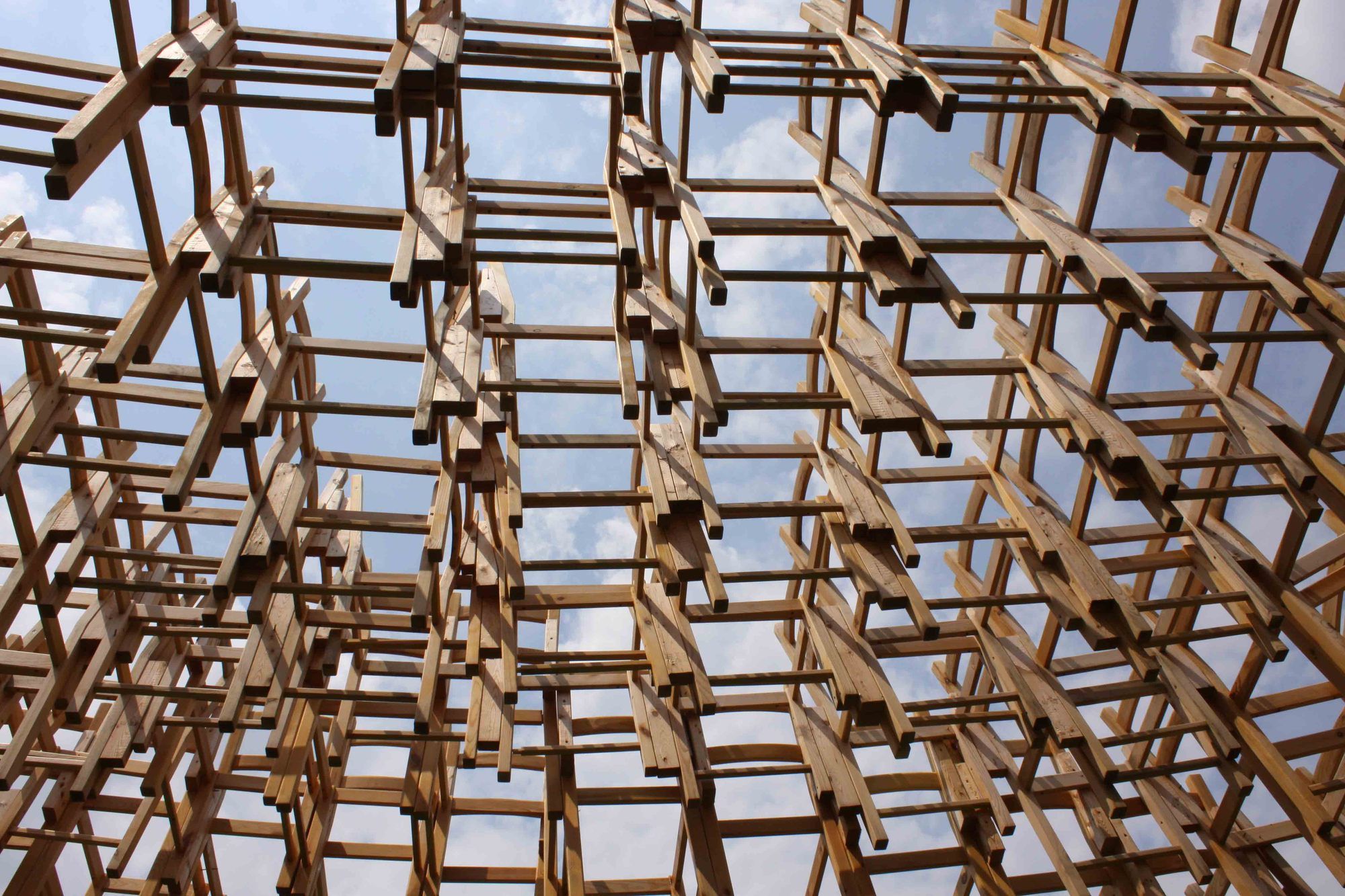
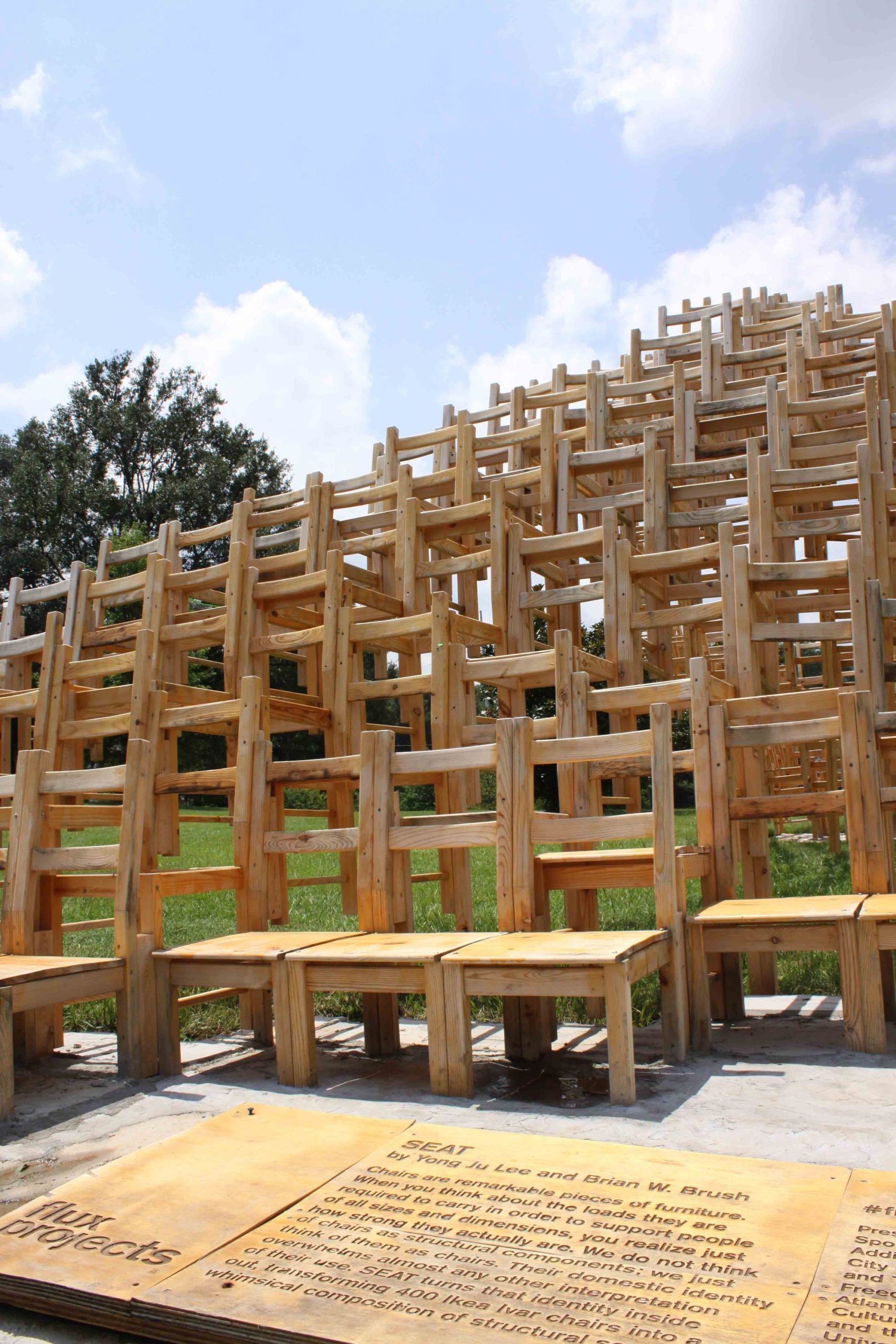
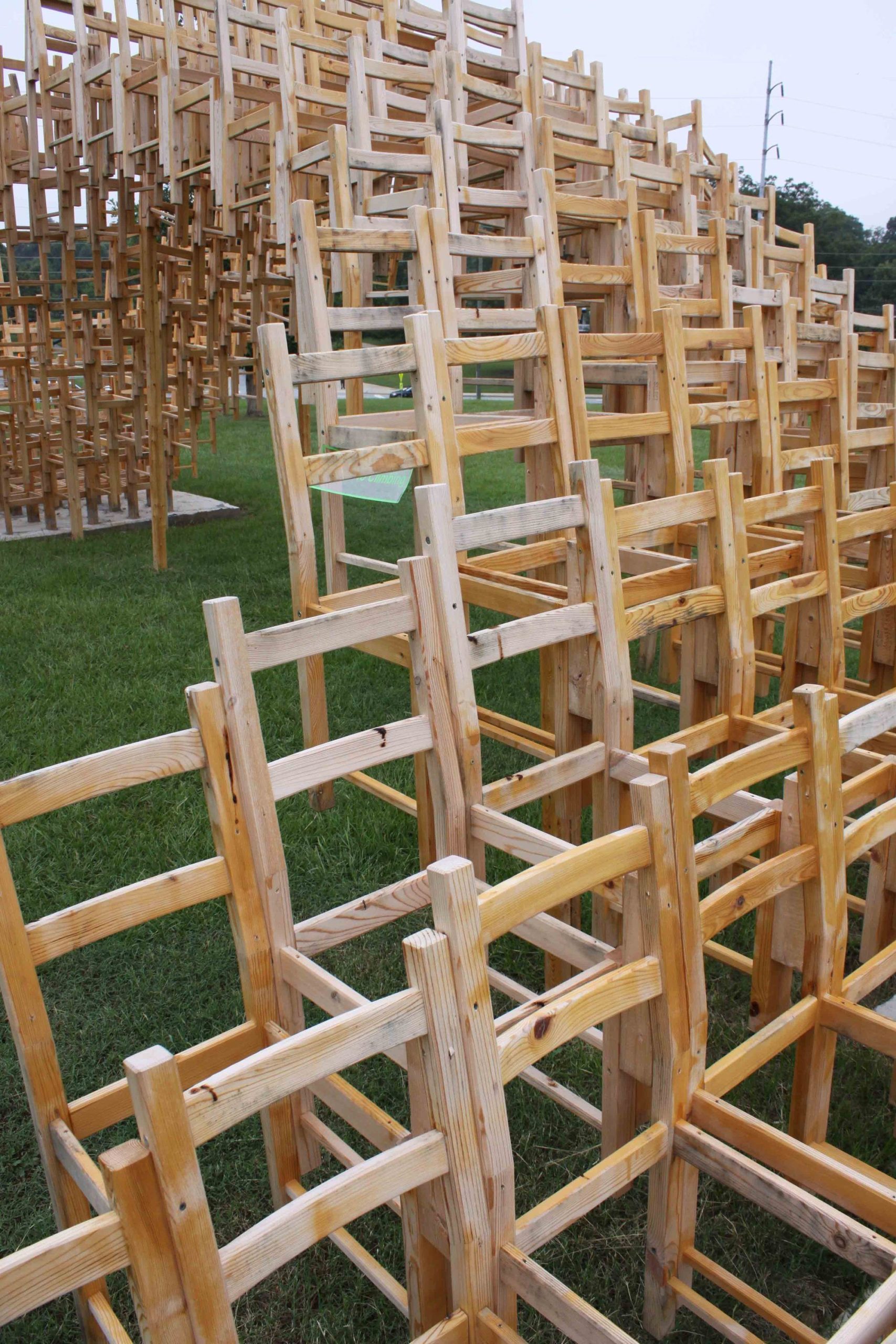
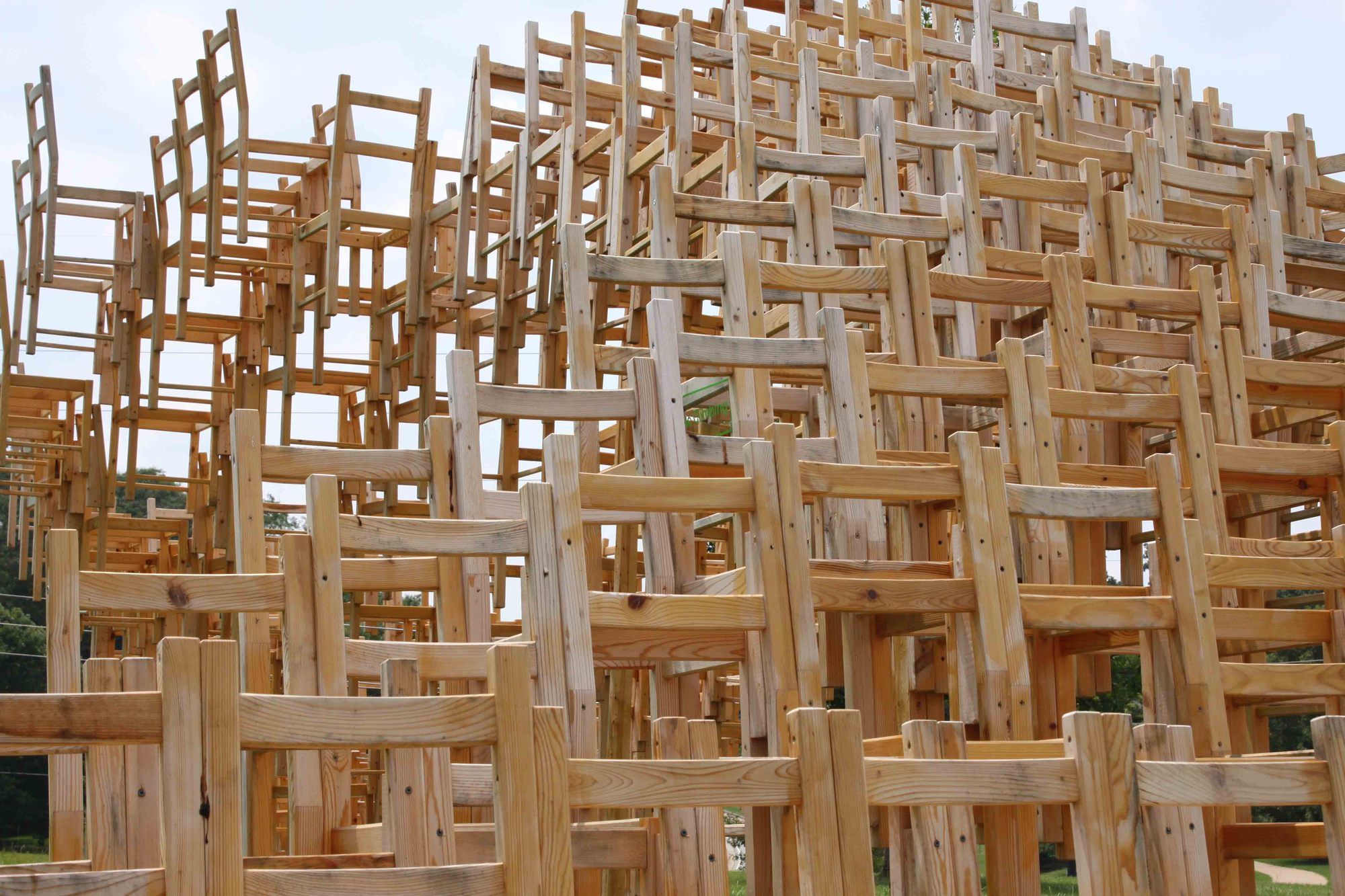
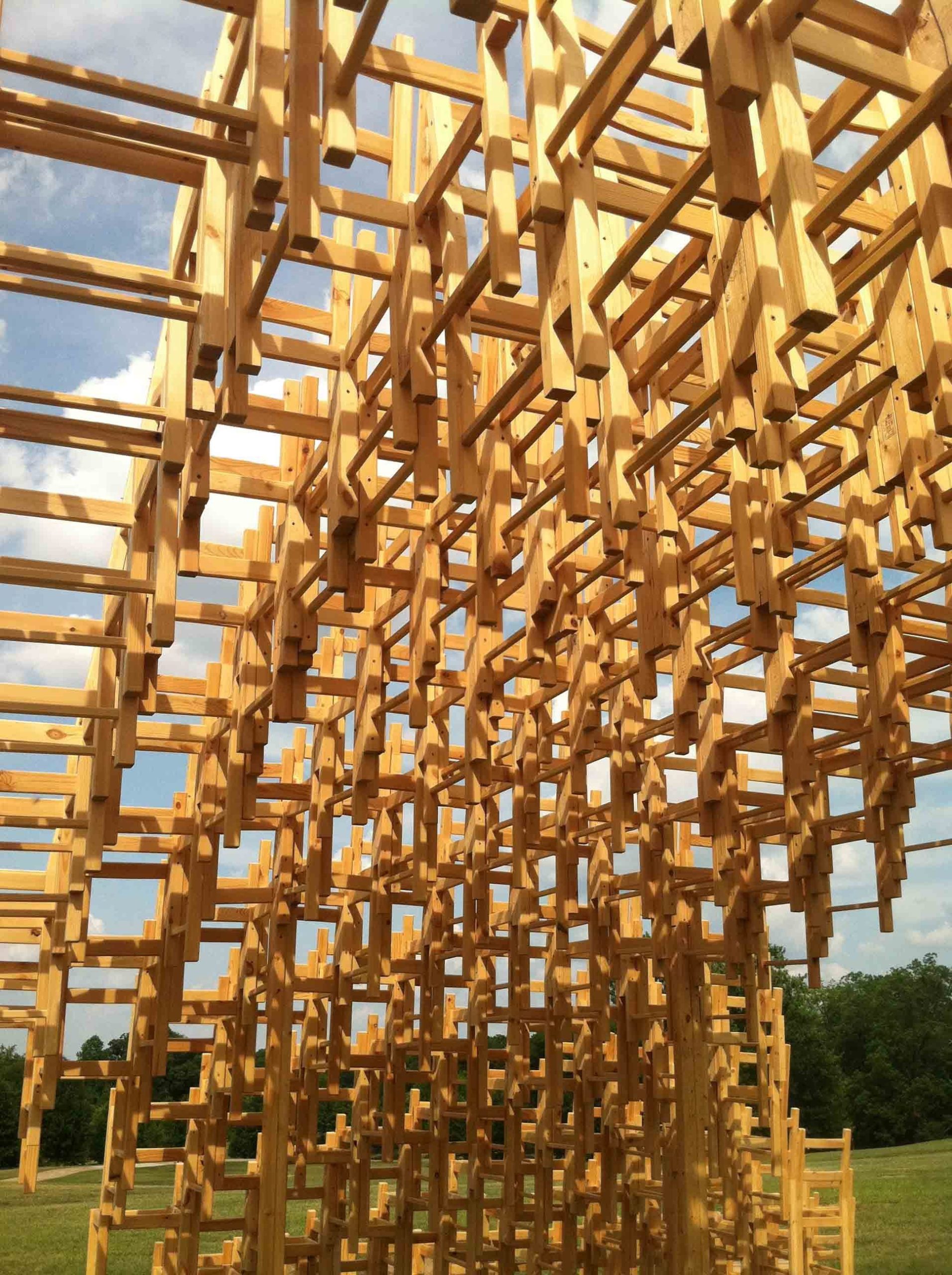

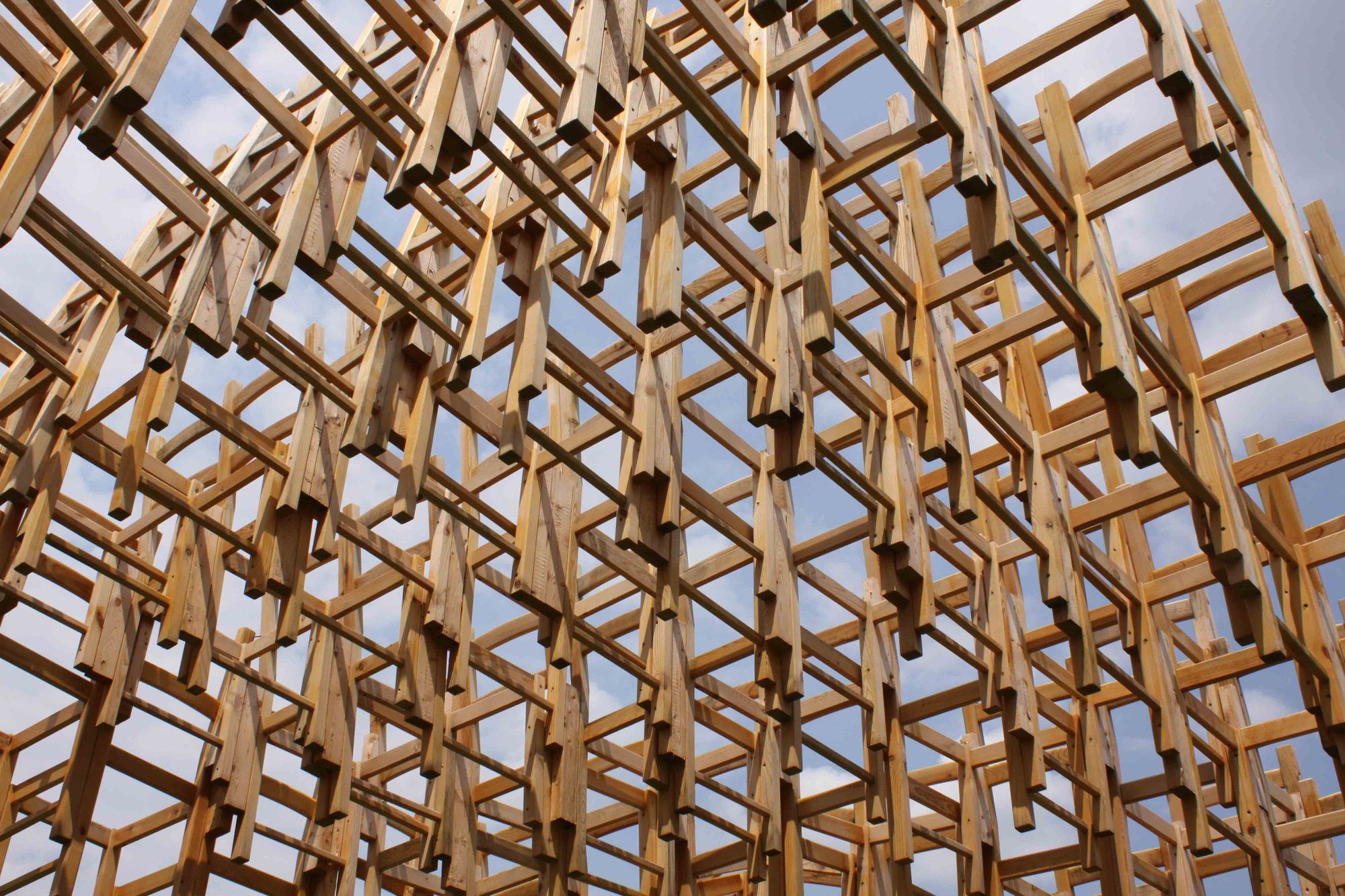
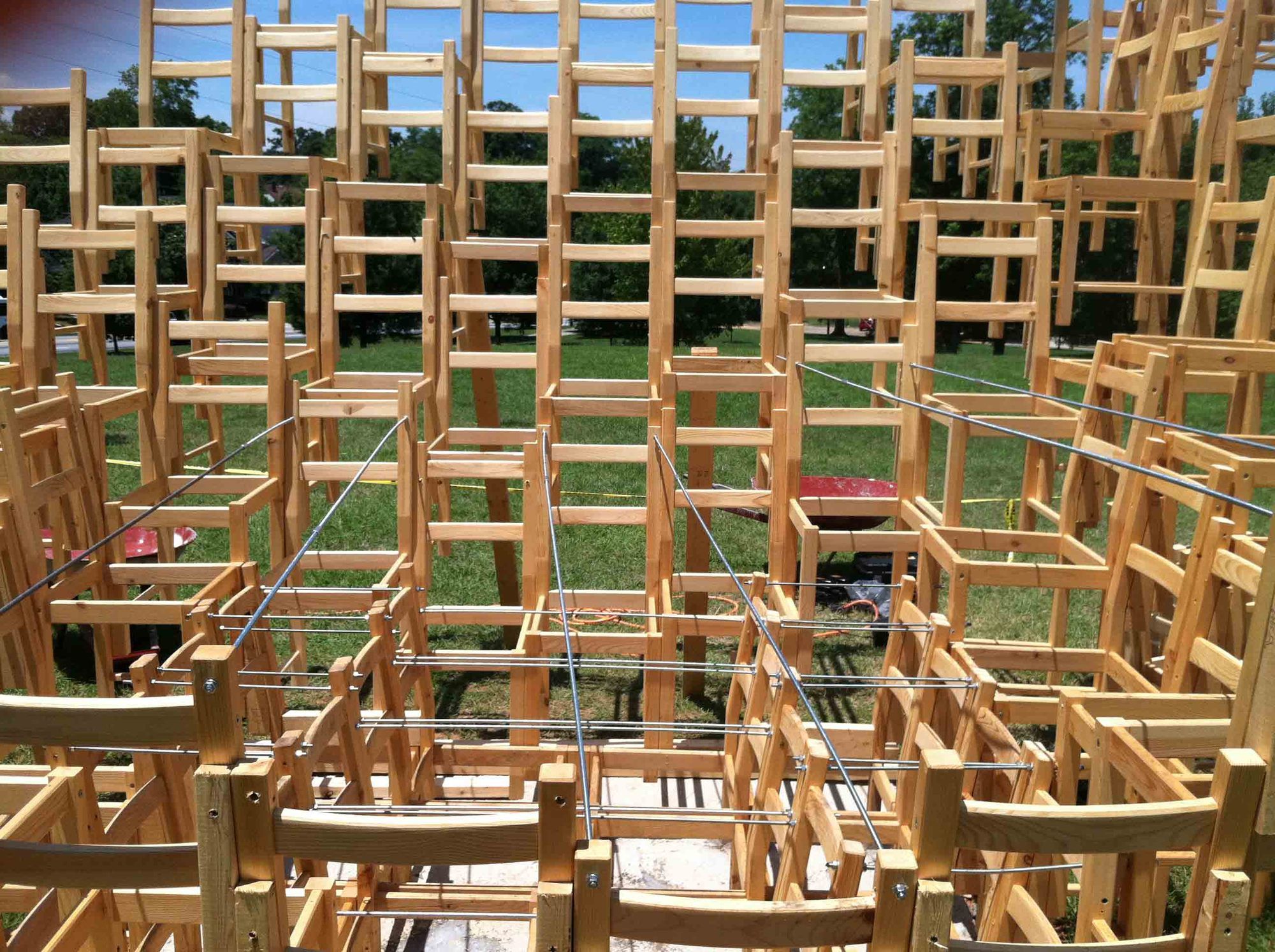
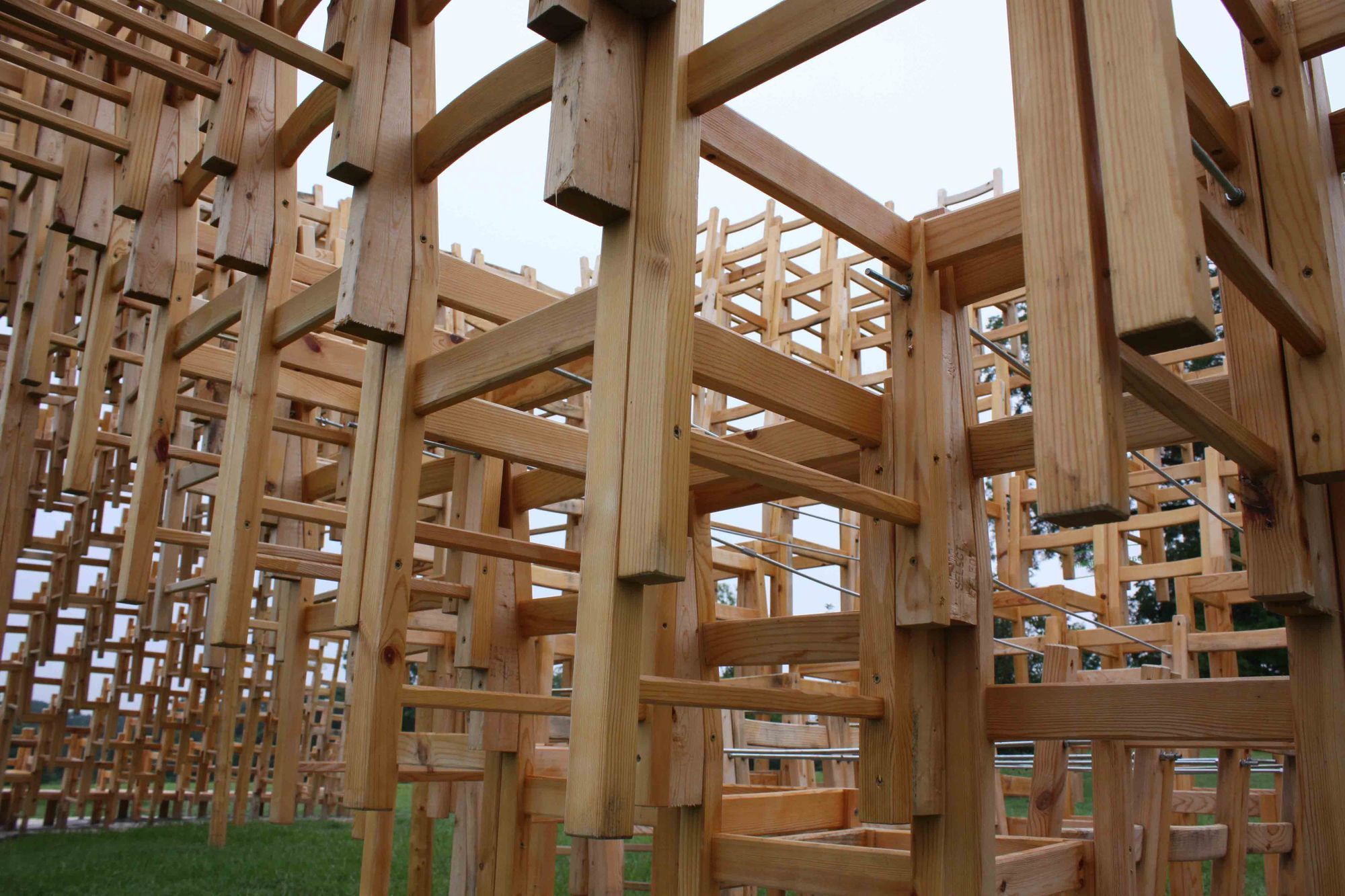
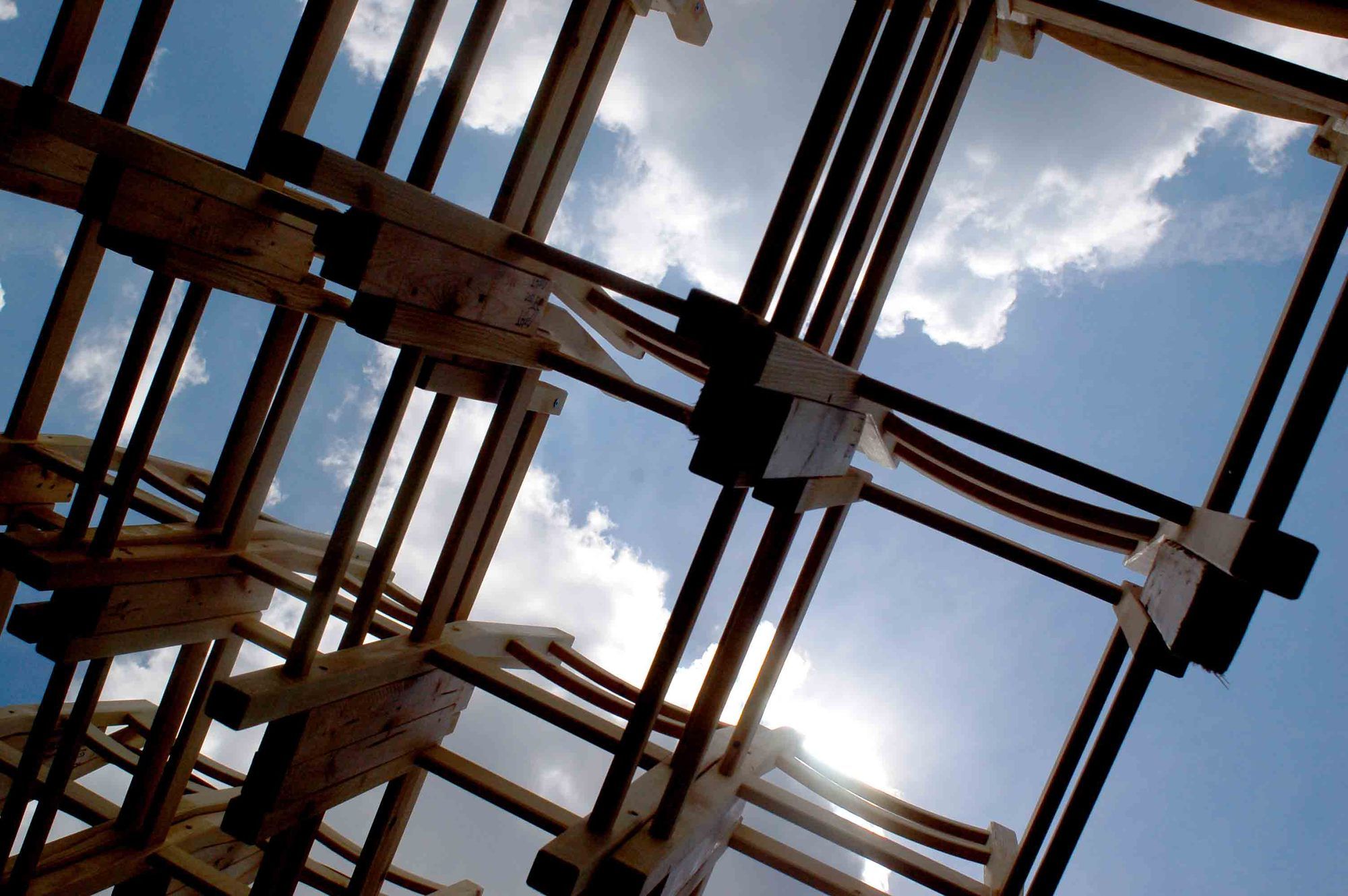
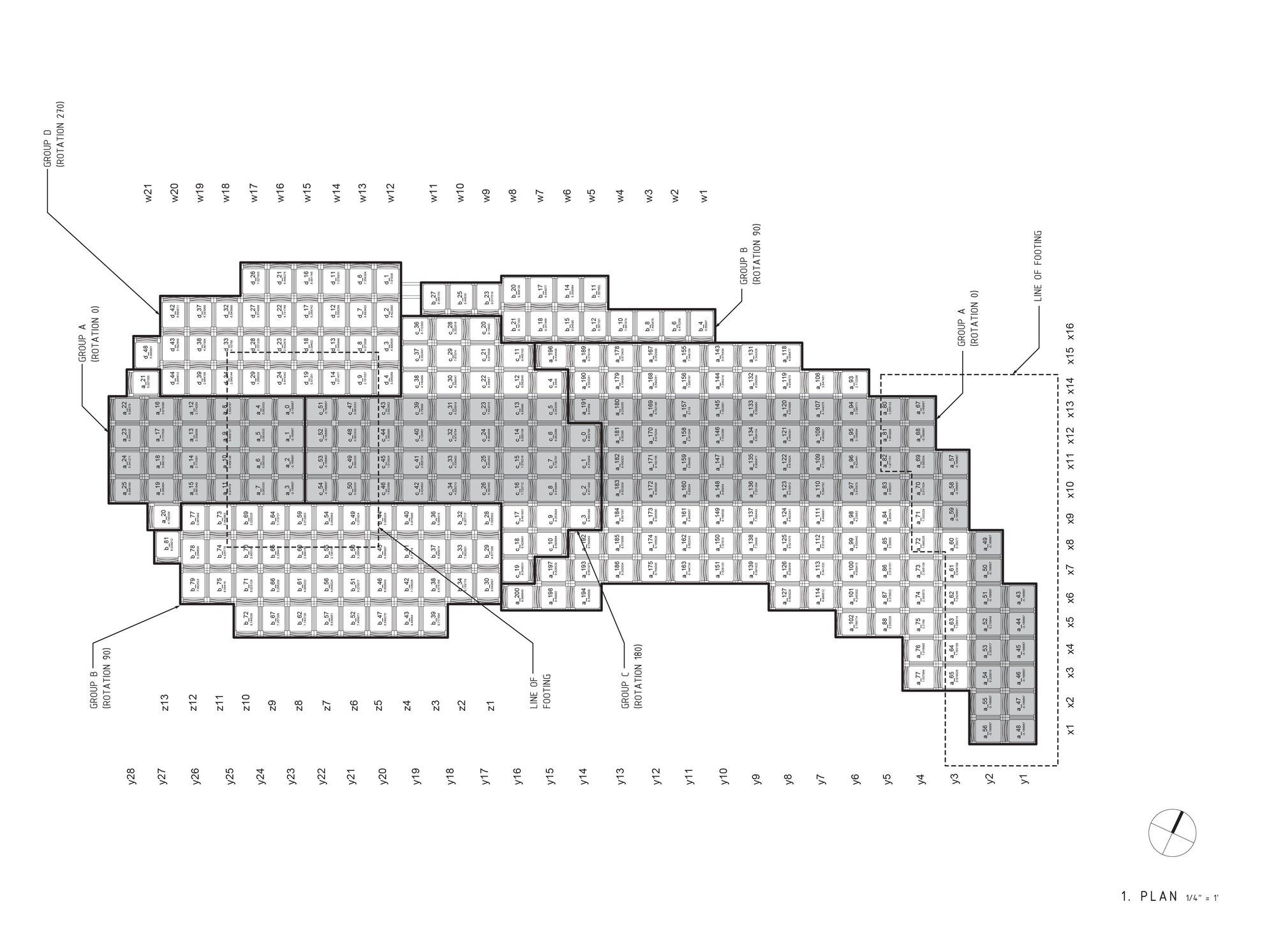
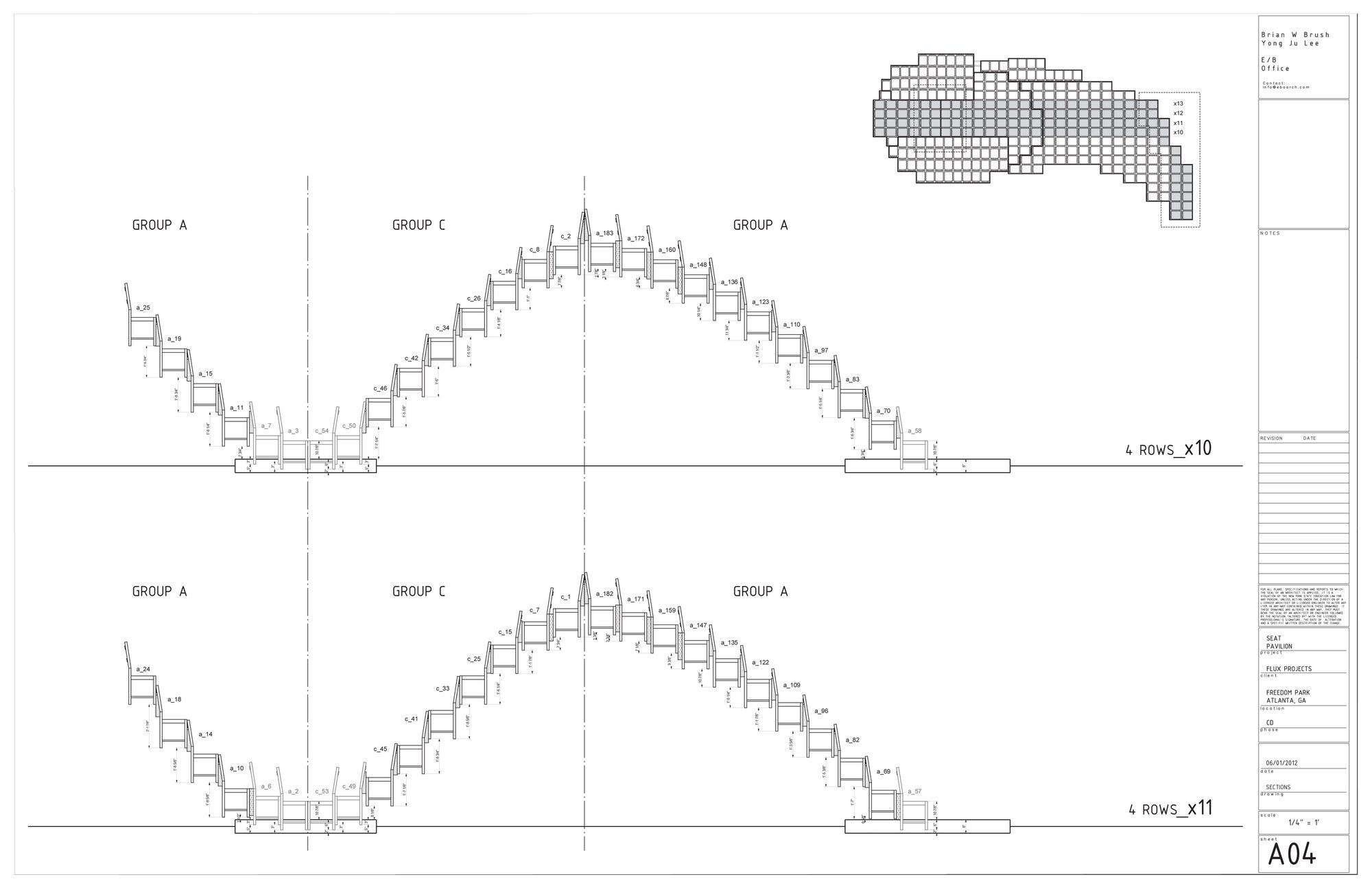
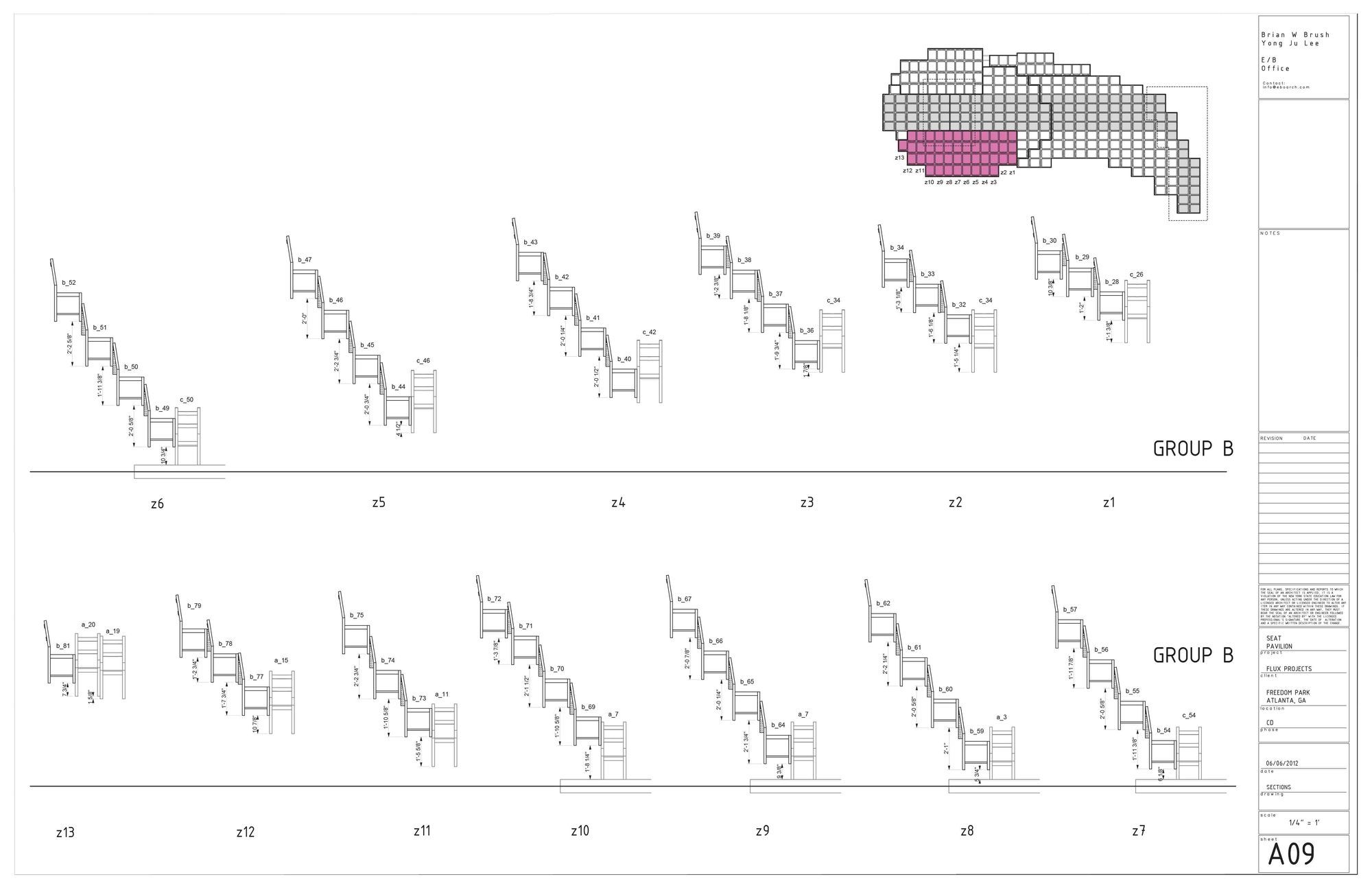
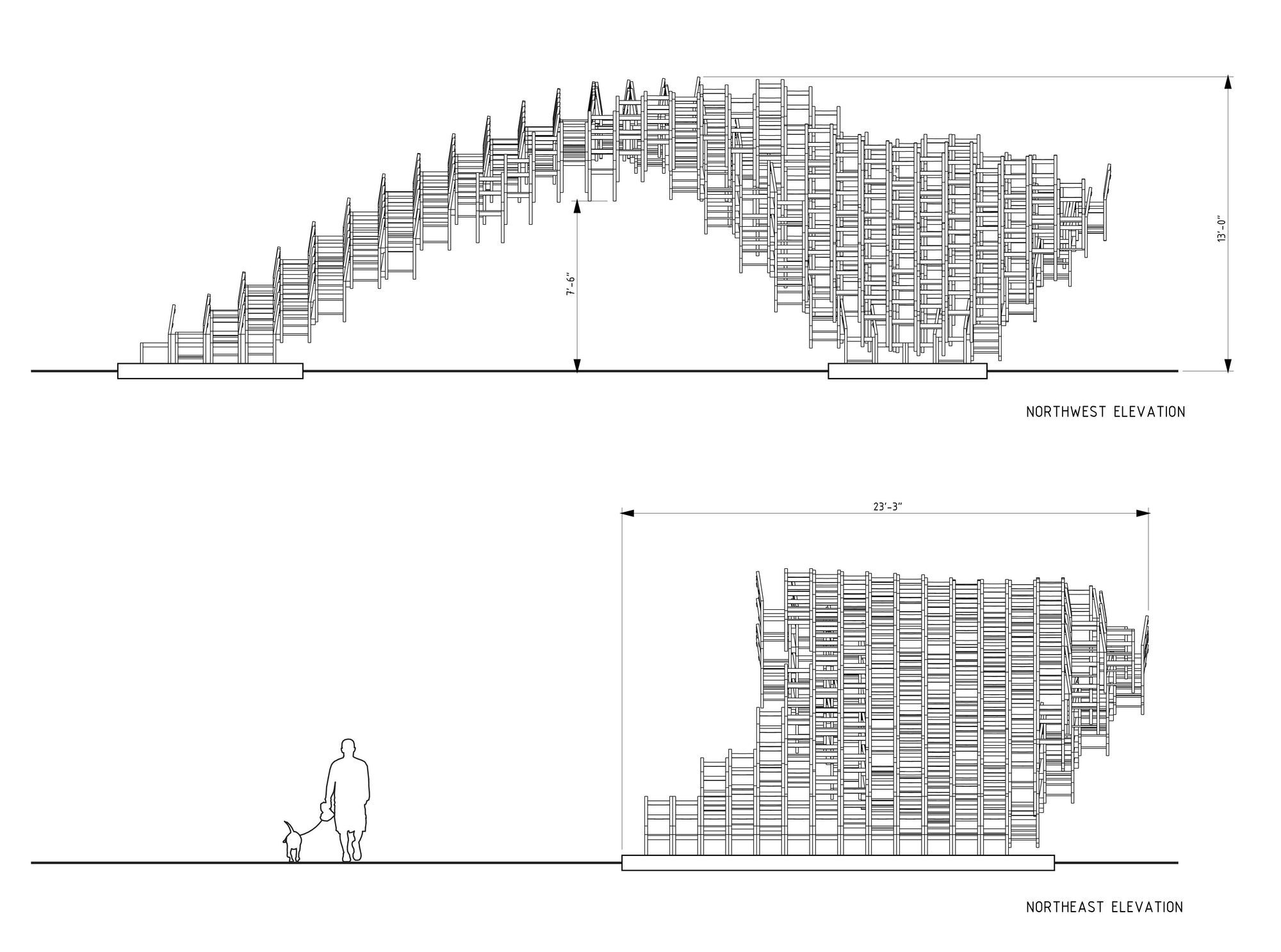
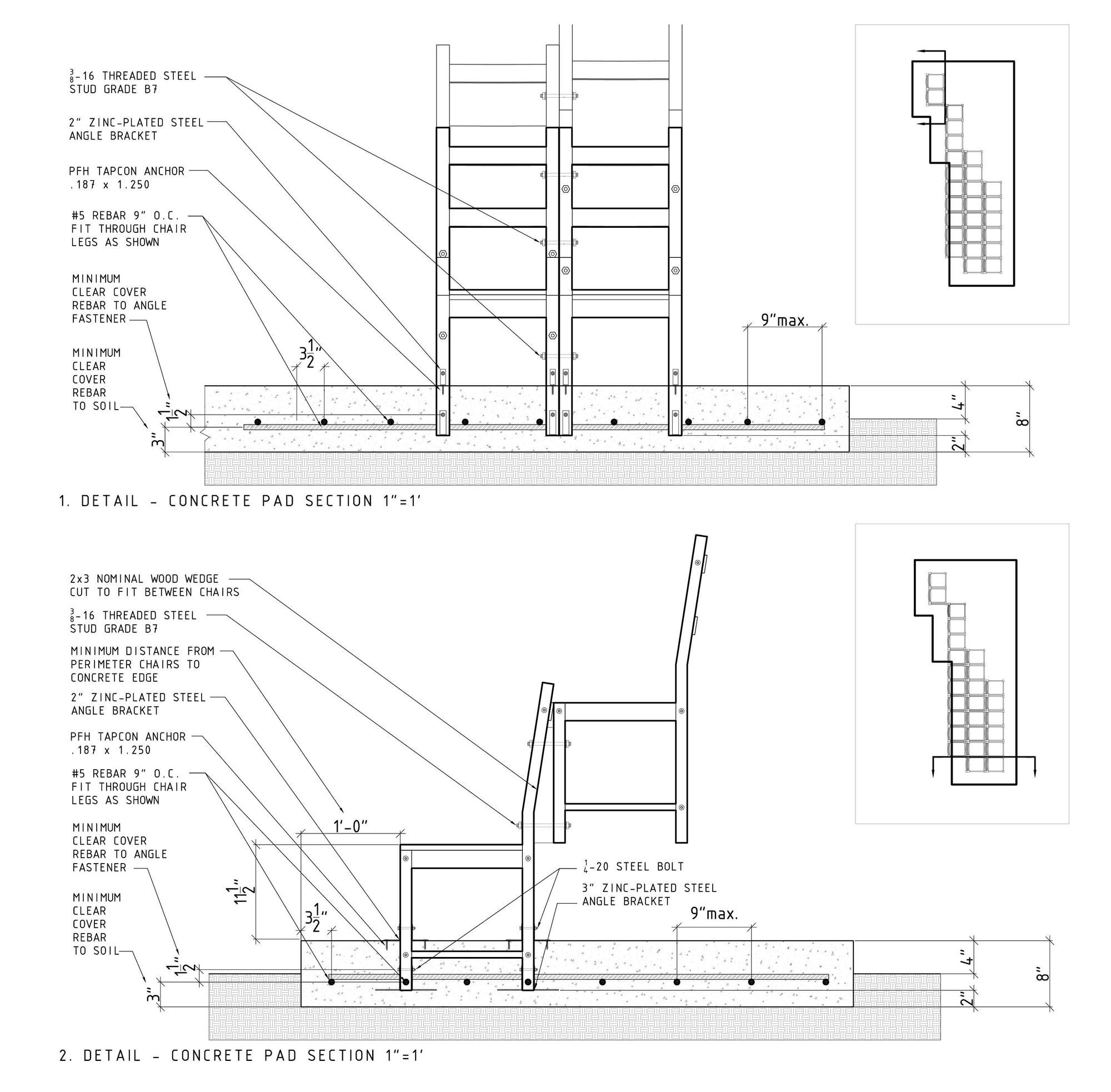


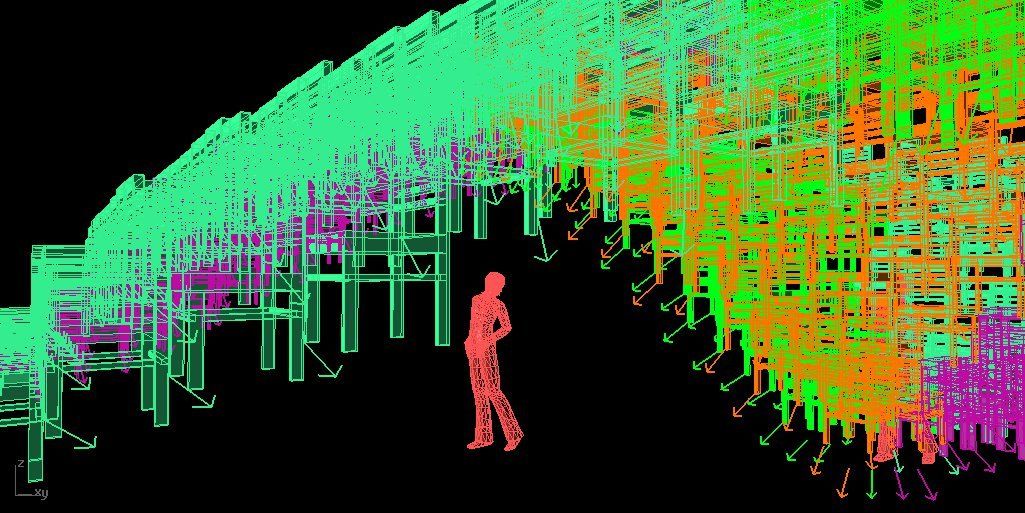
courtesy of E/B Office and Eve Styles


